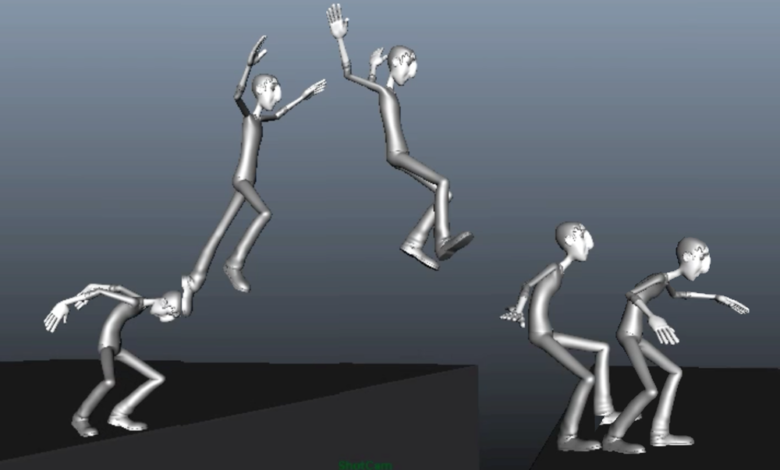How to Animation Dance Sequences in 2D


Animating dance sequences in 2D can be a challenging task. But it can also be an immensely rewarding process. In this blog post, we will help you understand the process of animating dance sequences in 2D with the help of reliable animation studios in Atlanta. Let’s jump right into it!
1. Understanding the Basics of Dance Animation
Before diving into the technical aspects of animation, it’s important to understand what makes dance sequences unique. Dance is an expressive art form that involves coordinated movement, rhythm, and emotion. When animating dance, you need to capture:
– Rhythm and Timing: The beats and pace of the music should guide the movement.
– Fluidity and Grace: Movements should flow smoothly from one pose to another.
– Expression and Emotion: Dancers use their whole bodies to express emotions, which should be reflected in your animation.
– Weight and Balance: Understanding how weight shifts from one foot to another is crucial for realistic motion.
2. Planning Your Animation
Storyboard and Thumbnails:
Start by creating a storyboard or thumbnail sketches of your dance sequence. This helps visualize the key poses and transitions. Focus on major movements and changes in direction. Think of your storyboard as the blueprint for your animation.
Music Selection:
Choose the music that your characters will dance to. The rhythm, tempo, and style of the music will significantly influence your animation. Break down the music into beats and identify key moments where the dance should emphasize specific notes or rhythms.
Character Design and Rigging:
Ensure your characters are designed and rigged for dynamic movement. If you’re using cut-out animation or skeletal rigs, make sure the joints and limbs can move freely and naturally. For hand-drawn animation, ensure your characters are drawn in a way that allows for fluid motion.
3. Gathering Reference Material
Live Action Footage:
Watching live dance performances can provide invaluable reference material. Look for videos that match the style of dance you want to animate. Pay attention to how dancers transition between moves, their timing, and their use of space.
Animation Reference:
Study animated dance sequences from other works. Analyze how animators handle timing, spacing, and exaggeration. Classics like Disney’s “Fantasia” or more recent works like “The Princess and the Frog” offer excellent examples of animated dance.
Break Down the Movements:
Once you have your reference material, break down the dance into manageable segments. Identify key poses, breakdowns, and in-betweens. This helps in understanding the flow of the dance and the mechanics behind each move.
4. Animating the Dance Sequence
Key Poses:
Start by sketching the key poses of your dance sequence. These are the main positions that define the movement. Focus on capturing the essence of each move. Ensure that each pose is strong and clear.
Timing Charts and Spacing:
Use timing charts to plan the spacing between your key poses. This helps in achieving the right rhythm and pace. Decide which poses will be held longer and which transitions will be quicker. Timing charts are essential for maintaining consistency in your animation.
Breakdowns:
Add breakdown poses between your key poses. These poses help define the arc and path of the movement. Breakdowns are crucial for smooth transitions and ensuring that the movement flows naturally.
In-betweens:
Finally, add the in-between frames to smooth out the motion. In-betweens fill the gaps between key poses and breakdowns, creating a fluid and continuous movement. Pay attention to the spacing and timing to avoid any jerky or unnatural motion.
5. Applying Animation Principles
Squash and Stretch:
Use squash and stretch to enhance the movement and add a sense of weight and flexibility. This principle is particularly useful for jumps, spins, and other dynamic actions.
Anticipation:
Incorporate anticipation to prepare the audience for major movements. Before a character leaps into a jump, they should crouch down slightly. Anticipation helps to make the actions more believable and impactful.
Follow-Through and Overlapping Action:
Ensure that parts of the character follow through and continue to move after the main action. For example, a dancer’s arm might continue to swing after the body has completed a turn. This adds realism and fluidity to the animation.
Exaggeration:
Don’t be afraid to exaggerate certain movements. Exaggeration can make the dance more expressive and dynamic. However, balance is key—too much exaggeration can make the movement look unnatural.
6. Refining Your Animation
Polish and Clean-Up:
Once the rough animation is complete, it’s time to polish and clean up the frames. Refine the lines, correct any inconsistencies, and ensure that the movements are smooth and fluid.
Color and Shading:
Add color and shading to your animation. This enhances the visual appeal and helps in distinguishing the characters from the background. Pay attention to lighting and shadows to add depth and dimension.
Background and Environment:
Create a background that complements the dance sequence. The environment should support the movement and not distract from the characters. Consider adding elements that interact with the dancers, such as dust particles, leaves, or lighting effects.
Final Touches:
Add any final touches, such as special effects, motion blur, or camera movements. These elements can enhance the overall impact of the dance sequence and add a professional finish to your animation.
Final Thoughts
Animating dance sequences in 2D can look complex and difficult, but through carefully planning your animation you can create dynamic dance sequences. Remember, practice is key. The more you animate, the better you’ll become at it!










